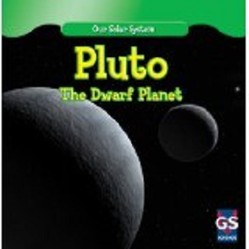Pluto is so far away that New Horizons, the space craft to finally get to it, had to speed faster than any space craft before it, and it still took years to get to Pluto. Before this mission images were fuzzy, with even the Hubble Space Telescope unable to produce enough pixels to show any detail whatsoever. All we knew is that it had bright and dark areas, and a moon, Charon, that was large compared to Pluto itself. There are also two smaller moons known to exist. This picture is now changing, coming into a much better focus.
The early reports indicate large ice structures, not likely water ice, with cracks and cliffs. Another surprise is that Pluto is being reported as slightly larger than it was initially thought to be.
Intor Image: Allowed by the Amazon affiliate program. The product is shown below.








 UAPs, Formerly UFOs, If They Are Real How Can We Explain Their Arrival to Earth?9 days ago
UAPs, Formerly UFOs, If They Are Real How Can We Explain Their Arrival to Earth?9 days ago
 Polar Coordinate System11 days ago
Polar Coordinate System11 days ago
 Aurora Can Disrupt Electrical Devices And Even the Grid?12 days ago
Aurora Can Disrupt Electrical Devices And Even the Grid?12 days ago
 Overcoming Difficulties Encountered with Mathematics13 days ago
Overcoming Difficulties Encountered with Mathematics13 days ago



Comments
As a scientist I do not see any credibility on astrology, so I must go with the astronomy decision. Some scientists still want Pluto to be a planet, but in reality most thing it is not significant either way.
blackspanielgallery, Unlike astronomers, astrologists are not happy with the downsizing of Pluto from planet to dwarf!
They waited so many years And so much could have gone wrong, but didn't.
It was really cool to see the reaction of the folks at NASA when they started getting the pictures.
As a scientist I can say what it is called is not important.
Seems a pity that Pluto had to lose its status as a "real" planet. But it's exciting that New Horizons was already on course to investigate it, so now we can learn a lot more about it - a dwarf planet is still worth knowing about!